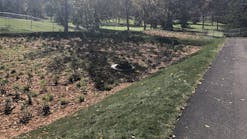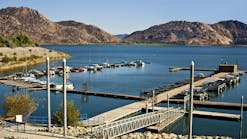Stanford develops rapid method for flood severity analysis
New Stanford research has developed a way to quickly calculate the approximate depths of flooding in different areas and number of people affected, according to a press release from Stanford University.
The Floodplain Adaptation Strategies Testbed (FAST) provides a rapid overview of flood severity and exposure that shows how deep the flooding was in different locations, and how many people were exposed to those depths.
Stanford researchers from the Natural Capital Project (NatCap) and the Carnegie Institution for Science collaborated on the new method. Their analysis offers insights into potential options and costs for incorporating adaptation to future floods into rebuilding efforts, and shows that climate adaptation measures like these could have helped most, if not all, of the people affected by the flood.
“With events of this scale, it’s very poorly understood what the costs of climate adaptation would be,” said Rafael Schmitt, lead author of the paper, published Oct. 25 in Environmental Research Letters, and a lead scientist with NatCap. He noted that climate adaptation has been a second priority behind climate mitigation – a trend now called the adaptation gap. But clearly, climate change is here now.
“We were motivated by these big floods that are happening now every year, to ask: how can we conduct a very high-level assessment of what it would cost to adapt livelihoods to a changing climate? This could help countries and international donors evaluate the cost-effectiveness of specific adaptation measures,” Schmitt added, noting the default is often to build back to the status quo, resulting in lack of preparedness for future floods, much as rebuilding from Pakistan floods in 2010 did.
A new climate adaptation decision-support tool
The researchers addressed two main options for adapting to future flooding: “moving up” by building elevated structures, or “moving over” by temporarily relocating when floods occur. The depth of flooding – and how far away dry land is – are important factors for determining which response makes sense.
Locations with shallow flood depths that are far from dry land would favor elevating buildings, while flood depths of greater than two meters make elevated structures impractical and too costly, based on experiences in nearby Bangladesh. Yet flood stage information (i.e., flood depth or severity) to help make this determination has been hard to come by.
The team brought together satellite data on where flooding occurred, which are readily available in nearly real-time; ground elevation data combined with simplified hydrologic principles (e.g., water flows downhill) to reveal depth; and demographic data on population density, housing, and other infrastructure.
This produced their “Floodplain Adaptation Strategies Testbed” or “FAST,” a rapid overview of flood severity and exposure that shows how deep the flooding was in different locations, and how many people were exposed to those depths.
Through FAST, the researchers estimated that 26.6 million people in Pakistan were exposed to low water levels (less than 1 meter), 7.4 million people were exposed to water levels between 1-2 meters, and 5.7 million people were exposed to more than 2 meters of flooding. Based on this and proximity to dry land, there were 27.5 million people in the “move up or over” category (in other words, either strategy could work), 5.1 million people in the “move over” category, 6.3 million people in the “move up” category, and half a million people in the retreat category (where the flood depths were greater than 2 meters and they’re far from dry land).
Focusing on the 7.4 million people who experienced 1-2 meters of flood depth, the analysis estimated adaptation costs between $1.5-$3.6 billion, in addition to the $5.8 billion to rebuild housing to the status quo.
Prioritizing equity and resilience in rebuilding efforts
This version of FAST looked only at housing but it could also be applied to other types of infrastructure, such as roads, schools, and hospitals. And in the future, its analyzes could become even more detailed because of a new, more advanced, NASA Surface Water and Ocean Topography satellite, or SWOT.
The researchers also recognize that there are other adaptation options besides “moving up or moving over.” For example, local water agencies often rely on dikes, levees, and other “hard” infrastructure – which the researchers warn can promote development in areas prone to flooding, increasing the risk of catastrophic damages if infrastructure fails. Whatever the mix of responses is, FAST could help provide information, but it must be checked to see whether and how these options meet actual community needs.
“Countries of the Global South, like my native Colombia, would benefit from process-based model assessments at scale and in a timely manner that can guide the investments of scarce resources. Especially since many of these countries lack timely-generated data, which complicates strategic decision investments,” said Virgüez.






